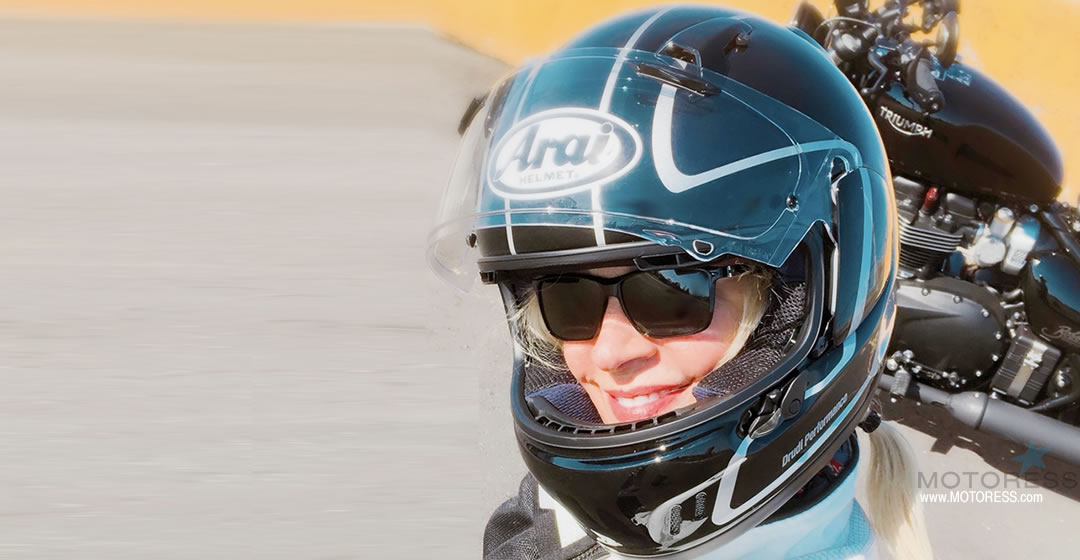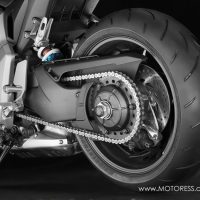Last Update: 25 May 2023

Buying a motorcycle helmet is not as easy as it may sound. There are so many choices, makes, and models. And on top of that, vast variations in prices. There are many factors to consider to you personally, all of which are part of the decision process. These factors are important whether you’re a new motorcycle rider or an experienced one. It’s tempting to put style, colour and price ahead of those dull safety features when buying a motorcycle helmet. But the reality is, you need to measure the standards and performance of the helmet foremost – your safety, comfort and protection, is key.
The first thing and truly important piece of motorcycle gear to buy when you’re planning on riding a motorcycle for the first time is your helmet. A helmet will do more than protect your head, it will also provide you comfort. It will shield you from wind, rain, cold temps, road debris, and noise pollution. It will further help you avoid hearing loss and fatigue on longer rides. All this to ensure focus to the road.
A full-face helmet is the best recommendation. Goes without saying the more coverage, the better the protection. But not all riders go for that as many want to feel the “wind on their face” from the open road. However, facts and research proves that your helmet is without a doubt, the most important piece of rider equipment you’ll own.
The simple practice of wearing a helmet dramatically reduced the number of road fatalities for cycle riders.
According to one survey (2003) in America by the National Highway Traffic Safety Administration (NHTSA), motorcycle riders faced a 32% greater likelihood of dying in a crash compared to those driving in a car. The simple practice of wearing a helmet dramatically reduced the number of road fatalities for cycle riders. The NHTSA estimates that between 1984 and 2004, nearly 11,000 motorcyclists would be alive today if they were wearing a helmet while riding.
HELMET BUYER’S THREE MAIN GOALS:
SAFETY, FIT, COLOUR.
SAFETY
The first thing to check is that a helmet passes the safety standards and requirements in your specific country or region, i.e.. DOT, BSI, ECE etc. (see below). This is how you know your motorcycle helmet is safe. It receives a rating approval specific to your region of the world, as well as added voluntary rankings (i.e. SNELL ) which verify further the safety “effectiveness” of a helmet.
FIT
It’s really important to find the helmet that fits your head the best. Even the safest helmet will fail you if it’s so loose that it comes off in a crash. EU research shows that this happens in 12 percent of motorcycle accidents!
If your helmet doesn’t fit properly, it is not going to do the correct job. The helmet’s going to move around a lot, it’s going to buffet; it will create problems with fatigue and even tension in the neck. You don’t want the helmet rotating around either.
- Tight, snug, fit almost to the point of being uncomfortable. You don’t want the padding to move against the skin; you want only your skin to move. If the helmet moves around, the helmet is likely too big. Once you begin wearing your helmet its inner linings and shells will wear in, fitting to your head. And a size too big can reduce protection level by 30%.
- A loose-fitting helmet can increase noise level. This is not helpful to your concentration, focus to the road and can be fatiguing. Not failing to note preventing hearing loss.
- The street environment is far more dangerous than racing, invest in a good helmet!
- Look for any tight spots that cause discomfort. You can find this out by leaving the helmet on in the shop for 10-15 minutes. And don’t be embarrassed, it’s part of the helmet buying process.
- Fit your head, not your face.
- A helmet’s life is good for 3-5 years (Arai 5 – 8 years) depending on usage, consider this as a balance to your investment. It will last a while.
- Never buy, borrow or wear a used or second-hand helmet. An already used helmet will have already pre-shaped to the previous owners head. This means that the inner impact shells have moulded to fit another person’s head, which may leave a spot or too much space in an area which would cause your head to move on impact.
COLOUR
Another consideration is the helmet’s colour. Go for a visible colour, one that will get you noticed on the road or in traffic. A matte black motorcycle with matching gear and helmet may look pretty cool, but you won’t be very visible. Many accidents occur to riders from drivers pulling out from side roads because they didn’t see the rider.
Other Considerations When Buying a Motorcycle Helmet
- Ventilation. In hot weather good airflow is important to keep cool. At the same time you want to ensure any vents on the helmet can be closed off when it’s cold and rainy.
- There’s only so much you can do to test your helmet in a shop – so read helmet reviews of your helmet shortlist. These reviews will also be able to tell you how noisy the helmets are, which is a function both of the shape and finish of the product, etc.
- Removable liners. These are another nice feature to look for. You can imagine with sweat, dirt, weather; things can dirty inside your helmet. The ability to remove pads and linings once in a while to clean/put in the washing machine will make your riding life more pleasant.
- Visors. Your helmet visor can fog up in certain weather conditions – no matter the claims against such are made. The PinLock anti-fog system is proven, and popular system available for a wide range of helmets. If your choice doesn’t come pre-fitted with something comparable, it will be worth investing in.
What is the Snell Memorial Foundation?
Named after William “Pete” Snell, the Snell Memorial Foundation , a popular amateur auto racer who perished from massive head injuries (his helmet failed to protect him) from a sports car roll-over accident in 1956. The foundation was established in 1957. As a memorial to Pete, a group of scientists, physicians, racing colleagues and friends teamed together. They dedicated their efforts to promote research, education, testing and development of standards geared to improve the effectiveness of automotive racing helmets. The first standard came about in 1959 for crash helmets in general. The first motorcycle helmet specific standard was introduced in 1985. The test facility is located in Sacramento CA. have a look at the testing standards performed for motorcycle helmets and you’ll see why your Snell rated helmet costs a little more.
*Note: Manufacturers such as Arai have their own highly technical testing facility in Japan. Their testing is exceptional!
International Helmet Safety Standards
EUROPE
Most European countries apply the United Nations standard ECE 22.05. The ECE or European Economic Commission for Europe which was created under a United Nations agreement in 1958. The 22.05 part refers to the specific regulation that the standards for testing are described in.
OTHER EUROPEAN STANDARDS INCLUDE:
- ACU gold or silver badge (Auto-Cycle Union, UK). In the United Kingdom, many riders choose helmets bearing an Auto-Cycle Union (ACU) Gold sticker as it defines a stricter standard than the legal minimum ECE 22.05 specification. Helmets with an ACU Gold sticker are the only ones allowed to be worn in competition, or at track days.
- BSI 6658 (British Standards Institute, UK)
- SHARP(UK)
- GOST R 41.22-2001 (ГОСТ Р 41.22-2001, based on ECE 22.05, Russia)
NORTH AMERICA (USA/CANADA)
DOT: Department Of Transport; North American Standard; Federally Mandated
North American standards include:
- CMVSS (Canada) has a system of analogous rules called the Canada Motor Vehicle Safety Standards (CMVSS), which overlap substantially but not completely in content and structure with the FMVSS. The FMVSS/CMVSS requirements differ significantly from the international UN requirements, so private import of foreign vehicles not originally manufactured to North American specifications is difficult or impossible.
- United States Department of Transportation (DOT); FMVSS 218 Federal Motor Vehicle Safety Standards (FMVSS) are U.S. federal vehicle regulations specifying design, construction, performance, and durability requirements for motor vehicles and regulated Automobile safety-related components, systems, and design features.
They are the U.S. counterpart to the UN Regulations developed by the World Forum for Harmonisation of Vehicle Regulations and recognised to varying degree by most countries except the United States.
- Snell M2005 & M2010 (United States): The Snell Memorial Foundation has developed stricter requirements and testing procedures for motorcycle helmets with racing in mind, as well as helmets for other activities (e.g. drag racing, bicycling, horseback riding), and many riders in North America consider Snell certification a benefit when considering buying a helmet while others note that its standards allow for more force (g’s) to be transferred to a rider’s head than the U.S. Department of Transportation (DOT) standard.
Note, the DOT standard does not test the chin bar of helmets with them while the Snell (and ECE) standards do for full-face type only.
OTHERS
Others Include: NBR – Brazilian; CNS: Taiwan; AS 1698-2006: Australia; SG or JIS: Japan; KS G 7001: Korea; SIRIM: Malaysia; TIS: Thailand; IS 4151: India
Good-To-Know Helmet Test Facts:
- Snell tests down to an area above the mid ear level; random helmets purchased in the market place; and now has 15 standards from bicycles, to skiing, horseback riding, scooters, etc. The important ones are M2005 – Motorcycle – current
- M2010 – Motorcycle (written but not in force yet); CMR/CMS 2007 – Children’s Motorsports; L-98 – Mopeds & low powered vehicles; SA/K – Auto & Kart
- DOT standards are self-administered. Virtually no testing is done by the US Department of Transport.
- ECE 22.05 standard is tightly regulated and therefore reliable. Its test criteria is different from Snell or DOT, but the approved helmets test very close to what a DOT approved helmet would test at. As with DOT, it is a “lighter hit” standard than Snell.
- BSI 6658 Type A from Great Britain & JIS from Japan are other standards too. BSI is like Snell in stiffness.
- DOT standard does not test the chin bar of helmets with them while the Snell (and ECE) standards do.
-
*Note: A majority of helmets sold as DOT certified do not undergo any level of testing! Manufacturers don’t need to test their helmets to claim a DOT rating. If they do submit their helmet for certification it is generally done once using a prototype or model.
A helmet manufacturer simply needs to feel that a helmet meets the DOT specifications to brand it as “DOT rated.” The Depart of Transport might occasionally pull helmets to do random testing. But a majority of helmets sold as DOT certified do not undergo any level of testing.
Real World Facts On Helmet Use/Performance
- The most common hit zone is the forehead area along with the chin bar; your jaw.
- The most common impact material a helmet contacts is the flat pavement.
- Just like poorly inflated tires, a loose fit is very common and a big problem. No movement of your head within the helmet [during impact] is what will protect you.
- A “full-face” helmet offers the highest level of protection; open face being second. Beanies or ‘skull-cap” helmets are useless.
- Especially in motocross, a failed chin bar is a common failure point, but this is misleading. If the chin bar doesn’t yield when needed, the impact can create a basal skull fracture. The trick is that a chin bar failure must be engineered to yield outwards away from the face are purposely made to yield before causing a basal skull fracture; and to yield outwards. **But not all helmets are engineered so accurately. ARAI is one helmet that does pass this test.
When to replace your helmet? As said above 3-5 years (Arai helmet 5-8 years) but all depends on your riding style and how much you use your helmet. The inner foam shell and lining degrades over time. Do inspect the inner layers and use your common sense to gauge when it’s time for a new helmet.
If you are ever involved in an accident and even slightly hit your head/helmet, without question, your helmet should be replaced immediately. Similarly, if you ever drop your helmet, even from knee-height, it should also be replaced as the impact has compromised the helmet’s safety.
And as an instructor, as I’ve always said “fifty dollar head, fifty dollar helmet”! You get what you pay for in an helmet – and isn’t your beautiful head worth that?





4 comments
Very useful article. Have just shared with a family member for whom it should prove very useful! Hope she pays heed.
This is very useful and awesome tips to all the biker. I appreciate this post. Thank you for the post.
You bet Carolyn!
Health is wealth!! You should never risk your life at any cost. So, always wear a helmet before riding.